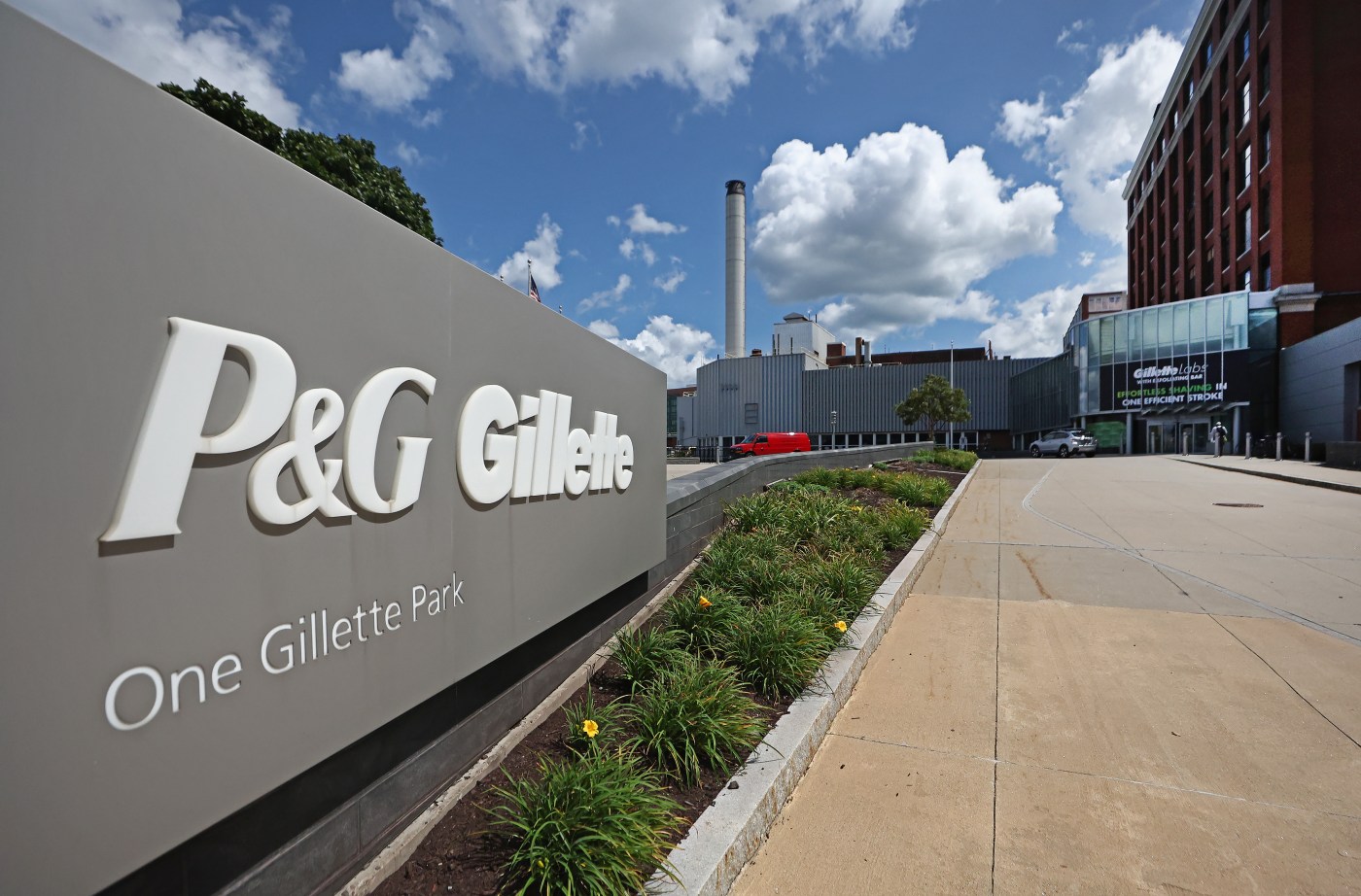
South Boston Gillette manufacturing campus could become mixed-use development, waterfront park
Nearly a year after announcing plans to move Gillette manufacturing operations out of South Boston, Procter & Gamble unveiled an ambitious plan to transform the 31-acre site into a mixed-use development with public waterfront park access.
P&G Gillette, known for its blade-making, formally submitted a letter of intent to file plans for the development with the City of Boston Planning Department on Wednesday — a project the company describes as having the ability to “transform an industrial site into a vibrant mixed-use community, enhancing access to the waterfront for South Boston and Fort Point Channel neighborhoods and beyond.”
“This project represents the single most significant investment that we have ever made in Massachusetts — including our largest investment in Boston,” reads a project website set up by the company. “This is a generational opportunity to fully modernize our technical operations and strengthen our business, while also providing significant new benefits to our neighborhood.”
The redevelopment would span the 31-acre site, creating a transit-oriented community with a minimum of 30% housing, as well as commercial development — lab, office and retail — and “significant, public open space,” the company said.
It would unlock a site that has been inaccessible to the public “for decades, welcoming the community to an inclusive, resilient waterfront park,” P&G Gillette said in a statement, emphasizing that nearly 50% of the site will be devoted to publicly accessible green and open space.”
Proctor & Gamble announced last October that it would be moving Gillette’s manufacturing operations from its 31-acre South Boston campus along Fort Point Channel, where it had been making blades for more than a century, to the company’s sprawling 150-acre site in Andover.
While the company says it plans to keep its headquarters and technical innovation center in South Boston, last fall’s announcement set off alarm bells for some community members and Southie officials who worried about the loss of city jobs — concerns that haven’t been entirely resolved by the redevelopment plans.
Tom Ready of the Fort Point Neighborhood Association said the group’s last conversation with the P&G team was in January, when, per the company’s website, project plans were presented at a Fort Point community meeting.
“Whilst we remain concerned about the loss of manufacturing jobs in the neighborhood, we recognize the unique opportunity the 30-plus-acre site presents,” Ready said in a statement.
“We look forward to re-engaging with P&G Gillette, the city and the state, and expect an inclusive process that will result in truly transforming our area of South Boston, providing not only employment opportunities, but housing, large parks and meaningful civic space,” he said.
Last fall, the company estimated 750 jobs, described as headquarters, engineering and research and development, would be kept in the city, while roughly 450 manufacturing workers would move to the new Andover plant, with the first employees transitioning to their new locations in 2025 and 2026.
Kara Buckley, vice president of community affairs at Gillette, said the company’s “early conversations with the community have been helpful in guiding us,” and that it aims to “develop a project that will address some of Boston’s most critical needs — from resiliency and open space to housing and economic opportunity.”
“This is an important moment for our business and for Boston,” Buckley said in a statement. “Redeveloping our 31-acre South Boston site will create exciting new possibilities for the continued evolution of the city.”
Procter & Gamble Senior Vice President Joseph A. Stegbauer said in the letter of intent to the city’s planning department that the company anticipates having to seek zoning relief for the project, given that the site is primarily zoned for commercial and industrial uses and would need to be zoned to include residential.
A portion of the project site is also subject to licensing under Chapter 91, a state law that aims to protect and promote public use of waterways, and its implementing regulations, the letter states.
Related Articles
Federal judge tosses ex-Boston police commissioner’s defamation suit against city, Kim Janey
Boston police union, city councilors sound alarm ahead of weekend festival after mass shooting
Boston has acting mayor while Michelle Wu is out of town for Democratic National Convention
Hamas hostage exhibit sets up on Boston City Hall plaza: ‘I want him back’
Boston Common safety concerns prompting tour company to rethink route: ‘A tragedy’
Gillette’s campus in South Boston currently includes about 1.5 million square feet of office, manufacturing, laboratory and warehouse uses, as well as various accessory and ancillary uses, Stegbauer wrote. He noted that the project, if approved, would be built out in phases.
A spokesperson for the Boston Planning Department said meetings to review the project are scheduled to begin in the fall.
Mayor Michelle Wu appears to be on board with the plan.
“I’m glad to see Gillette’s commitment to a mixed-use, transit-oriented development that incorporates climate resilience planning for the Fort Point Channel, and devotes half of the site to open space,” Wu said in a Wednesday statement. “My administration will continue to work closely with Gillette and the community through planning, design, and regulatory processes to ensure the details of this major investment best serve the community and are consistent with our goal of inclusive, resilient growth.”


